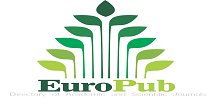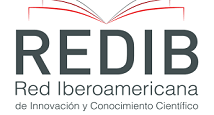How to produce written text in science communication
Intertextuality of the academic text
DOI:
https://doi.org/10.51440/unsch.revistaeducacion.2023.22.481Keywords:
Academic text, written text, intertextuality, scientific communication, text productionAbstract
All stages of the scientific research process require communication, be it oral, written or audiovisual, for this purpose the knowledge producer (researcher) uses various academic-institutional strategies in order to construct science in writing. For this task of writing an academic text better, be it a research plan, academic report, final research report, scientific article, academic article, or another similar one, we appeal to the theory initiated by G. Genette (1989) called transtextuality, transcendence of the text. One of the modalities is intertextuality understood as the explicit or implicit co-presence of texts in one; This inevitable phenomenon is evident in the communication of science as soon as the various reference strategies are used, which make the academic text that is constructed result in a linguistic network based on the microstructure, macrostructure and textual superstructure (Van Dijk, 2000). . The intertextuality of the academic text is evidenced in the following examples: The explicit intertextual relationship as soon as we use the textual quotations, either short or long, for example: Branden (2007, p. 52), explains that, "Behavior in self-esteem it refers to the ways of proceeding during social relations, both in the workplace, in the academic institution or simply in relations with neighbors […]”. The implicit intertextual relationship in paraphrasing, commentary, synthesis citations; in whose examples the referential elements of the academic text do not appear expressly. In conclusion, the intertextuality applied in the communication of science constitutes an effective resource in the structuring or writing of the academic text, these can be research plans, research report, scientific article, etc.
Downloads
References
Barthes, R. (1981). Teoría del texto. Londres: Routledge.
Beugrande, R. y Dressler, W. (1997). Introducción a la lingüística del texto. Bercelona: Ariel.
Carlino, P. (2005). Escribir, leer y aprender en la universidad. Una introducción a la alfabetización académica. Bs. As: Fondo de cultura económica.
Cassany, D. (2000). Construir la escritura. Barcelona: Paidós.
Genette, G. (1982). Palimpsestos. La literatura en segundo grado. Madrid: Taurus.
Padrón, J. (1996). Análisis del discurso e investigación social. Temas para Seminario. Caracas: USR.
Sánchez, O. (2016). La intertextualidad como herramienta para la comprensión lectora comprensión lectora de textos literarios. Tesis de Maestría. México: UNAM.
Tapia, M., Burdiles, G. y Arancibia, B. (2003). Aplicación de una pauta diseñada para evaluar informes académicos universitarios. Chile: Universidad Católica de la Santísima.
Van Dijk, T. A. (1995). Texto y contexto. Madrid: Cátedra.
Van Dijk, T. A. (2000). El discurso como estructura y proceso. México: S XXI.
Van Dijk, T. A. (1980). Texto y contexto. Semántica y pragmática discursiva. Madrid: Cátedra.
Downloads
Published
How to Cite
License

This work is licensed under a Creative Commons Attribution-NonCommercial 4.0 International License.





















